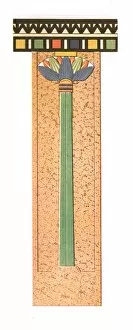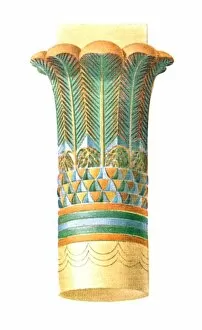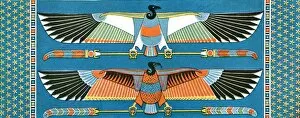Davennes Prisse Collection
"Davennes Prisse: A Glimpse into Ancient Egyptian Art and Architecture" Step back in time to Luxor, Egypt, in 1928 as we explore the captivating world of Davennes Prisse
All Professionally Made to Order for Quick Shipping
"Davennes Prisse: A Glimpse into Ancient Egyptian Art and Architecture" Step back in time to Luxor, Egypt, in 1928 as we explore the captivating world of Davennes Prisse. This enigmatic figure takes us on a journey through some of Egypt's most iconic sites. In Ptolemaic capital Edfu, we encounter an awe-inspiring column that stands tall amidst the desert sands. Its intricate carvings tell stories of ancient gods and pharaohs, leaving us mesmerized by their artistry. Moving on to Karnak, we are greeted by another magnificent column. Its sheer size and grandeur remind us of the power and opulence that once resided within these temple walls. The Bouquet capital from Thebes transports us to a realm where beauty meets functionality. Delicate floral motifs adorn this architectural masterpiece, showcasing the Egyptians' mastery in blending aesthetics with practicality. As we venture further to Philae, a Ptolemaic-Roman capital captures our attention. Its fusion of different artistic styles reflects the cultural exchange that occurred during this period - a testament to Egypt's rich history as a melting pot of civilizations. Back at Karnak, yet another imposing capital commands our admiration. It serves as a reminder of how these structures were not merely functional but also symbols of divine authority and religious devotion. Zawijet el Metin introduces us to an intriguing column whose purpose remains shrouded in mystery even today. We can't help but wonder about its significance within the ancient Egyptian society it once belonged to. Philae beckons again with its captivating capital - an embodiment of elegance and sophistication that leaves no doubt about the refined taste prevalent during this era. Stepping away from columns for a moment, we find ourselves captivated by a pilaster from Amun-Re Temple at Karnak. Its intricate details transport us directly into one man's vision of divine beauty.













